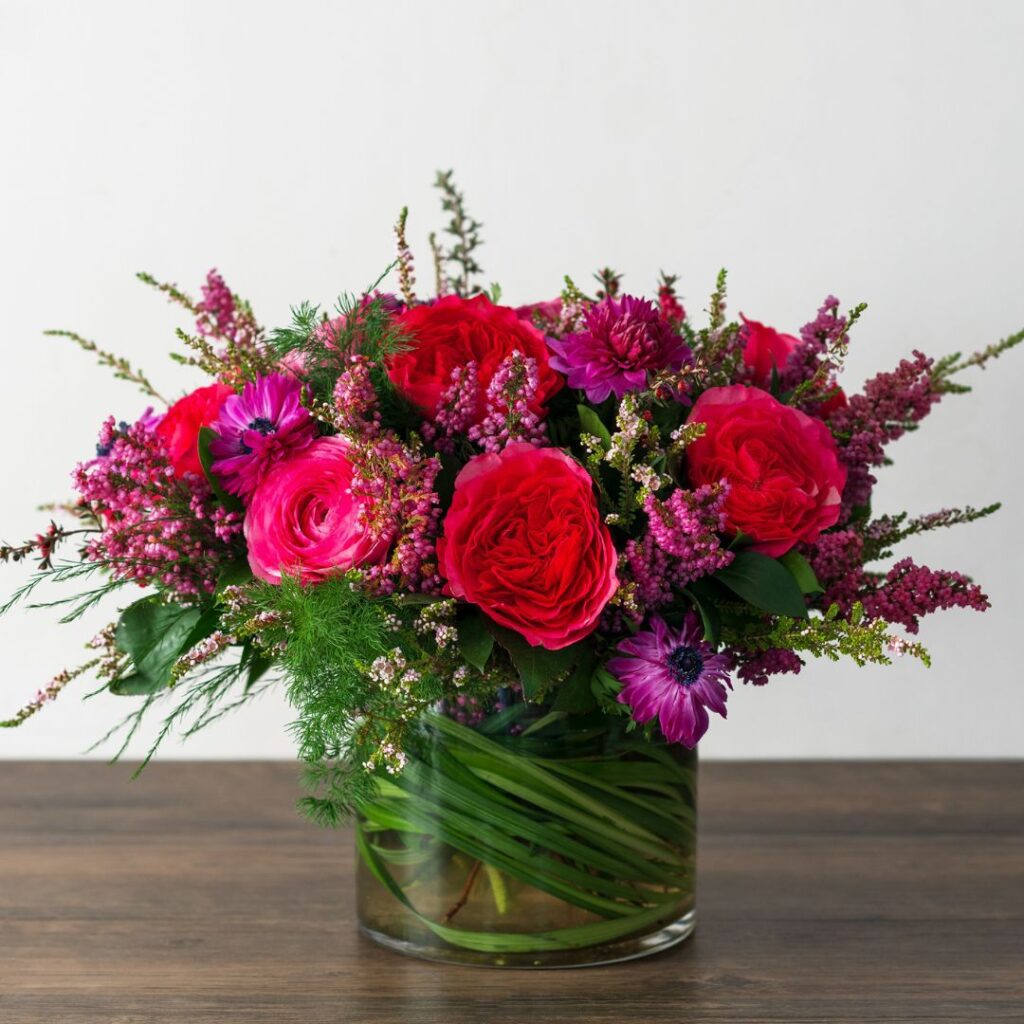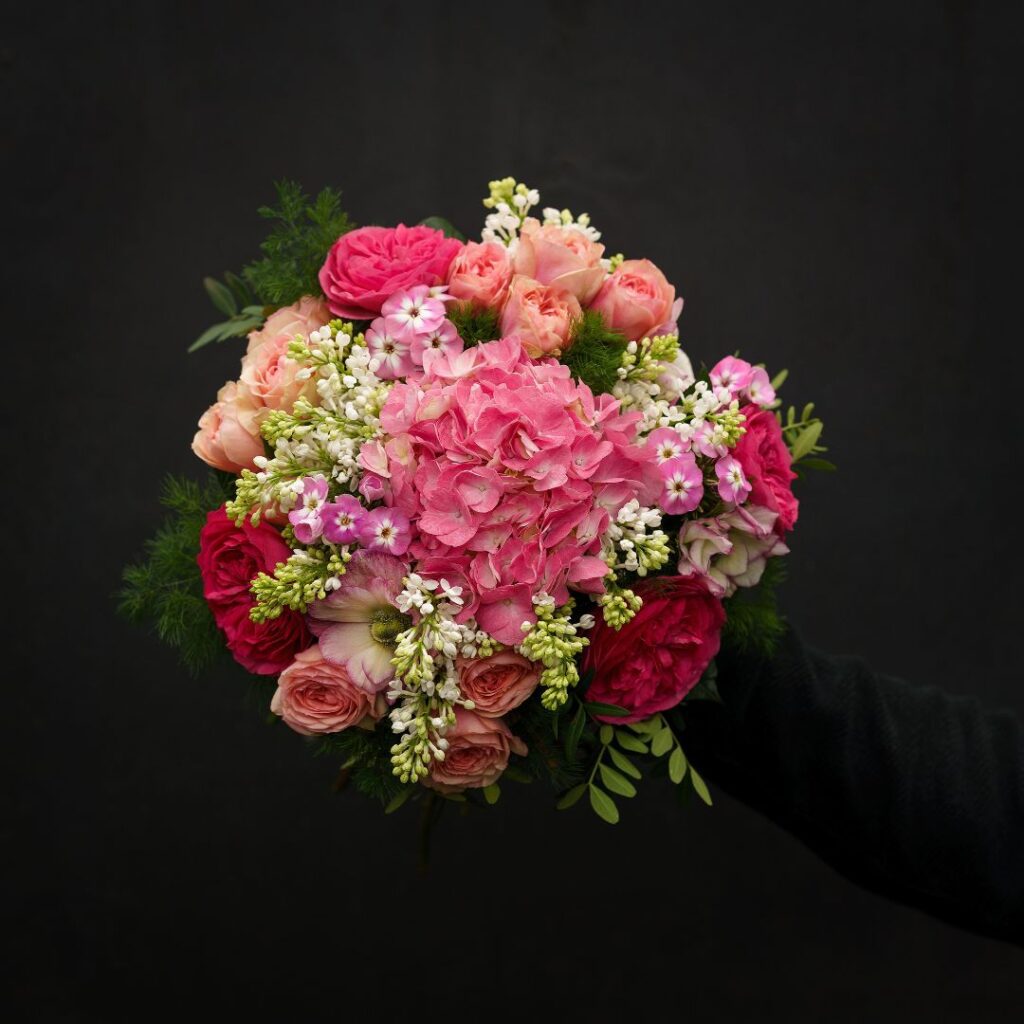January 17, 2025
A Blooming Tradition: The History of Flowers for Valentine’s Day
Valentine’s Day and flowers go together like springtime and sunshine. Every year, millions of bouquets are carefully crafted to express love, friendship, and admiration. But how did this tradition begin? Let’s take a journey through the history of Valentine’s Day flowers and uncover their hidden meanings.

Overflowing with meaning, the Sweet Heart arrangement features roses for admiration, peonies for prosperity and joy, clematis for beauty and creativity, and viburnum for fidelity and connection—a stunning expression of love and devotion
The Origins of Valentine’s Day Flowers
The tradition of giving flowers on Valentine’s Day has roots that span centuries, blending mythology, history, and cultural practices. While Valentine’s Day itself is linked to the Roman festival of Lupercalia and later Christian celebrations of St. Valentine, flowers entered the picture as symbols of love and affection in ways that were deeply meaningful to those who exchanged them.
The use of flowers as a romantic gesture can be traced back to Greek and Roman mythology. In Greek lore, the rose was closely associated with Aphrodite, the goddess of love and beauty. Legend has it that when her lover, Adonis, was mortally wounded, she ran to him, and her tears mixed with his blood to create the first red roses. This powerful connection between roses and passionate love solidified their status as symbols of romance.
Similarly, in Roman culture, flowers were used during festivals and celebrations to honor deities. Lupercalia, an ancient Roman festival celebrated in mid-February, involved rituals of fertility and pairing lovers, often accompanied by the exchange of flowers and tokens of affection. As Valentine’s Day evolved from these early celebrations, flowers naturally became intertwined with the holiday.
The association of flowers with Valentine’s Day grew stronger with the influence of poets and playwrights. William Shakespeare often used flowers as symbols in his works, tying them to emotions like love, jealousy, and sorrow. In the play Hamlet, Ophelia famously says, “There’s rosemary, that’s for remembrance; pray, love, remember.” These literary references elevated flowers to objects of deep emotional significance.

Sweet Kisses is a heartfelt celebration of family love. With anemones symbolizing sincerity, garden roses for admiration, heather for protection, and mixed greens for growth and vitality, this arrangement beautifully captures the care, joy, and connection shared with loved ones
The Language of Flowers
The idea of flowers as expressions of emotion truly flourished during the Victorian era in the 19th century. The rise of floriography, or the “language of flowers,” gave each bloom a unique meaning, allowing people to communicate feelings they might be too shy to say aloud. In a time when public displays of affection were frowned upon, flowers became an elegant and discreet way to express love, admiration, and even apologies. For example, a red rose declared passionate love, while a daisy conveyed innocence and purity, and other blooms had their own special messages:
- Pink Roses: Gratitude and admiration.
- Yellow Roses: Friendship and joy.
- Tulips: Perfect love.
- Orchids: Refined beauty and strength.
- Daisies: Innocence and purity.
- Baby’s Breath: Everlasting love.
- Carnation: Mother’s love.
Even today, the meanings of flowers remain a delightful way to personalize a bouquet. A carefully chosen arrangement can speak volumes!
The Rise of Valentine’s Day Flowers
By the 19th century, Valentine’s Day had become a well-loved holiday for expressing affection, and flowers naturally took center stage. Their beauty and fragrance made them ideal gifts, and their meanings added a romantic touch. Roses in particular soared in popularity, with red roses dominating the market. Advances in transportation made it easier to ship fresh flowers, and greenhouses allowed roses and other blooms to be cultivated year-round. By the mid-20th century, red roses had become the quintessential symbol of Valentine’s Day,
Modern Valentine’s Day celebrations have made flowers nearly synonymous with the holiday, not only as gifts for romantic partners but also for friends and family. Florists around the world prepare for this special occasion with creativity and care, curating arrangements that are as unique as the recipients themselves.

Celebrate the beauty of platonic love with the Bestie arrangement! Featuring hydrangeas for gratitude, roses for admiration, peonies for joy, stock for lasting happiness, and phlox for harmony, this bouquet is a perfect tribute to cherished friendships.
Beyond Roses: Unique Valentine’s Day Ideas
While red roses remain iconic, there’s a growing trend toward exploring other blooms and styles. Consider these fresh ideas for Valentine’s Day flowers:
- Mixed Bouquets: A blend of blooms like lilies, carnations, and snapdragons brings a dynamic look.
- Dried Flowers: Perfect for a long-lasting gift with a vintage touch.
- Potted Plants: Orchids, anthuriums, or even a lush green fern make for gifts that keep on giving.
- Personalized Arrangements: Use a loved one’s favorite flowers or colors for a thoughtful twist.
Flowers and the Heartfelt Tradition
What makes flowers so special on Valentine’s Day is their ability to evoke emotions. They’re not just gifts—they’re messengers of love, gratitude, and joy. Whether it’s a single red rose or an elaborate arrangement, flowers have the unique power to brighten someone’s day and strengthen connections.
As February 14th approaches, consider stopping by our florists in Winchester or Tewksbury to find the perfect blooms for the occasion. With their expertise, you’ll be able to craft a gift that’s as meaningful as it is beautiful.
Let Flowers Speak for You
This Valentine’s Day, let flowers help you share what’s in your heart. After all, love comes in many forms—romantic, platonic, familial—and there’s a bloom for every bond. So why not embrace this timeless tradition and add a little floral magic to the season of love?
